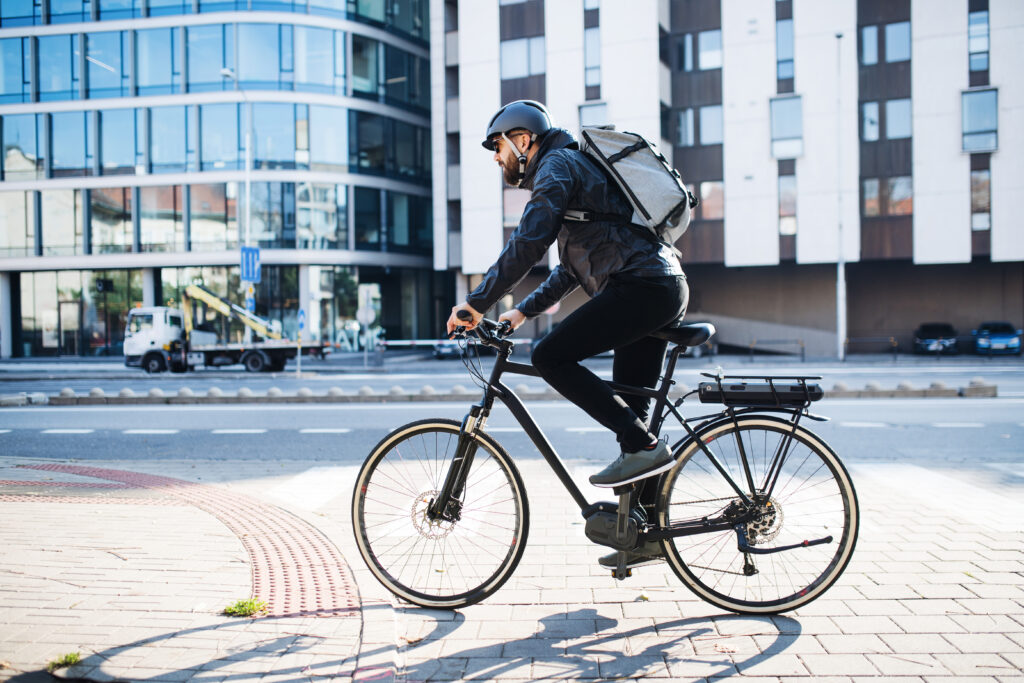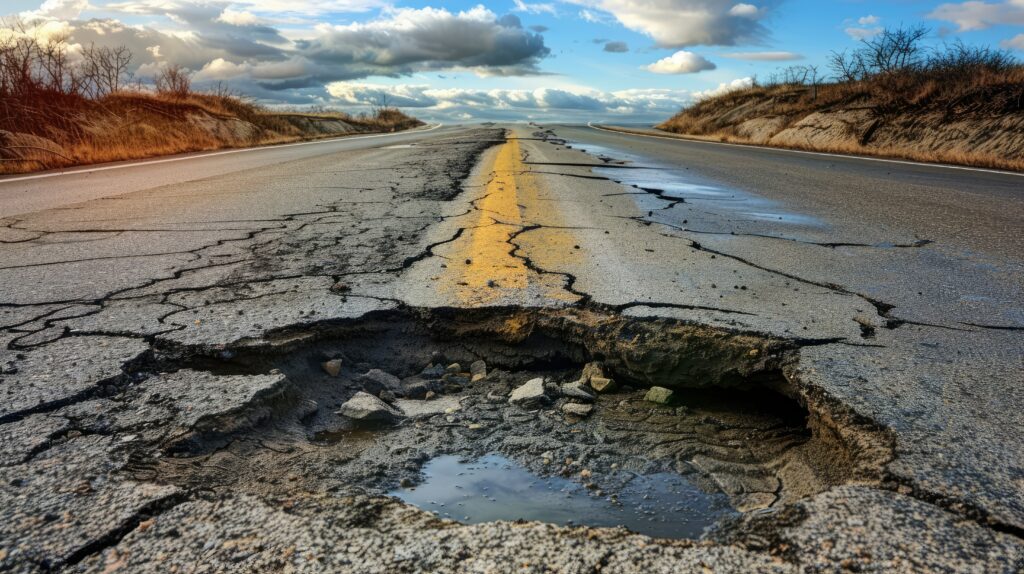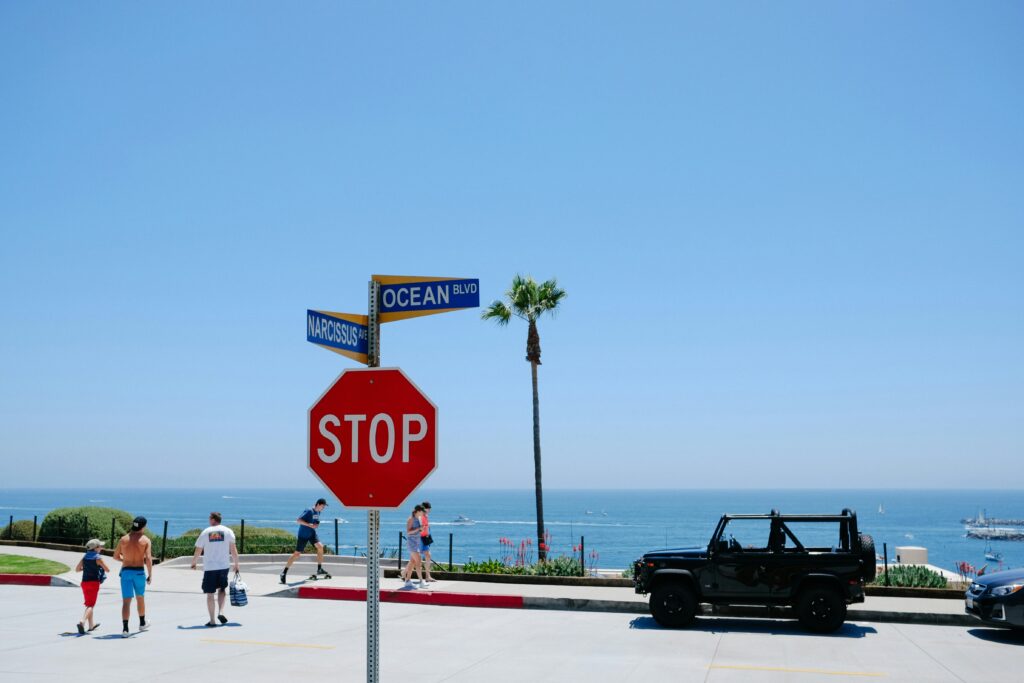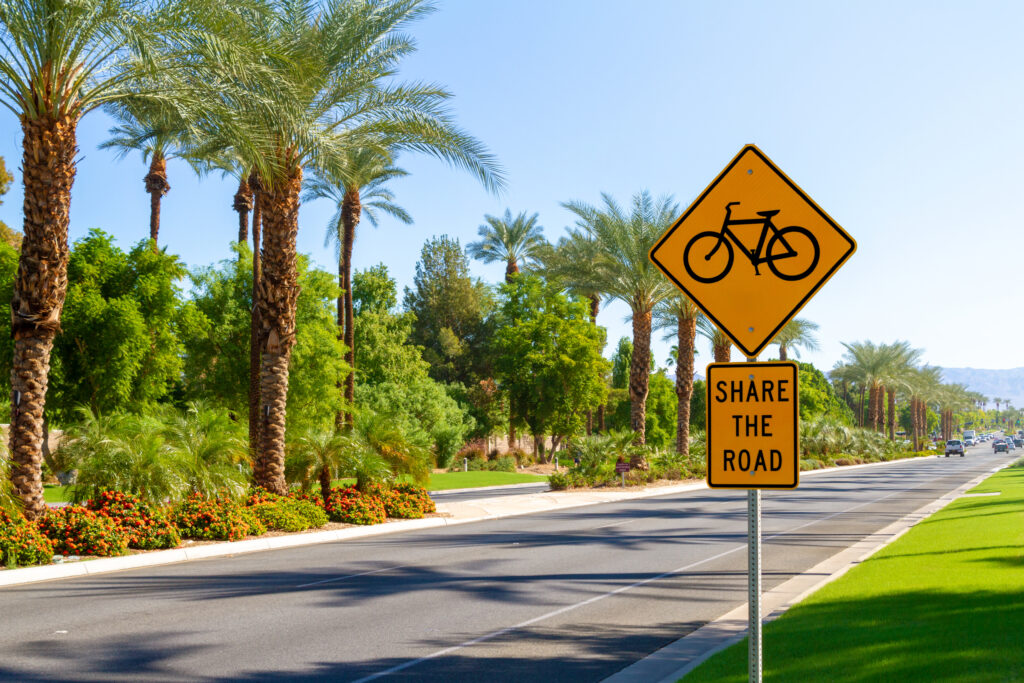Debunking Common Myths About Road Cycling

Debunking Myths About Road Cycling: 17 Common Misconceptions Road cycling is an exciting, rewarding, and healthy activity enjoyed by millions worldwide. However, many misconceptions prevent beginners from giving it a try. Whether it’s the belief that you need expensive gear, extreme endurance, or that cycling is unsafe, these myths can discourage potential cyclists from hitting the road. In this article, we’ll break down 17 of the most common road cycling misconceptions and provide factual, practical insights that can help you confidently start your cycling journey. 1. “Road Cycling Is Only for Professional Athletes” Myth: Many people believe road cycling is reserved for elite athletes who train for hours each day, compete in races, and wear professional gear. Reality: Road cycling is for everyone, regardless of fitness level, age, or experience. While professional cyclists dedicate years to training, the average cyclist, who trains five to eight hours per week, can enjoy cycling at their own pace, whether for fitness, commuting, or leisure. You don’t need to be in top physical condition to start cycling. Many beginners start with short rides and gradually build stamina. Road cycling is a fantastic way to improve cardiovascular health, burn calories, and reduce stress, even with just a few rides per week. ✅ Tip: If you’re a beginner, start with flat, easy routes and gradually increase distance and difficulty. Cycling apps like Strava and Komoot can help you track progress and find beginner-friendly paths. 2. “Anyone Can Ride Bikes” Myth: Bike riding is only for a specific group of people, such as the young, fit, or experienced. Reality: Contrary to popular belief, anyone can ride bikes, regardless of age, fitness level, or background. With the right equipment and a bit of practice, everyone can enjoy the benefits of cycling. Many cities have implemented bike-sharing programs and cycling infrastructure to encourage people of all ages and abilities to ride bikes. Whether you’re a seasoned cyclist or just starting out, bike riding is a great way to get exercise, reduce stress, and have fun. ✅ Tip: Don’t be intimidated by the idea of cycling. Start with short, easy rides and gradually build your confidence and skills. 3. “You Need Expensive Gear to Start Road Cycling” Myth: To enjoy road cycling, you must spend thousands of dollars on a high-end carbon fiber bike, aerodynamic gear, and professional-grade accessories. Reality: While professional cyclists invest in expensive equipment for performance gains, beginners can start with a simple, well-maintained road bike. Many high-quality, budget-friendly bikes are available, and second-hand options can provide excellent value. What truly matters is comfort, safety, and enjoyment. A well-fitted helmet, a bike that suits your body dimensions, and basic accessories like lights and a water bottle are far more important than having the latest technology. Adequate infrastructure, such as protected bike lanes, is also crucial for supporting all cyclists and ensuring safer and enjoyable rides. ✅ Tip: If you’re on a budget, consider checking out second-hand marketplaces, local bike shops, or rental services before making a big purchase. 4. “Cycling Long Distances Is Too Difficult” Myth: Road cycling requires intense endurance, and only those who can ride for hours can enjoy it. Reality: Long-distance cycling is optional. Many cyclists enjoy short 10–20 km (6–12 mile) rides at a comfortable pace. For the average cyclist who trains five to eight hours per week, a 20-mile ride can represent a standard session, noting how various factors like terrain and bike type can influence both the experience and the time taken to complete such a distance. The key is to ride within your limits and gradually build stamina over time. Cycling is a progressive activity—you don’t have to start with long distances. Regular rides, even for short durations, can improve fitness and make longer rides feel more manageable. ✅ Example: A beginner can start with a 5–10 km ride a few times a week. Within a couple of months, they may find themselves comfortable riding 30–50 km without difficulty. 5. “Every Ride Counts” Myth: Only long rides are beneficial for health and the environment. Reality: Every ride, no matter how short or long, counts towards a healthier and more sustainable lifestyle. Even a short ride to the local park or a quick spin around the block can make a big difference. Not only does bike riding improve physical health, but it also reduces carbon emissions and contributes to a cleaner environment. Moreover, every ride helps to promote cycling culture and encourages others to take up the sport. So, whether you’re a casual rider or a serious cyclist, every ride counts and makes a positive impact. ✅ Tip: Don’t underestimate the power of short rides. Incorporate them into your daily routine to reap the benefits. 6. “It’s Dangerous to Ride on the Roads” Myth: Cycling on roads is too risky due to traffic, reckless drivers, and poor road conditions. Reality: While cycling does come with some risks, proper safety measures significantly reduce them. Many cities and towns are becoming more bike-friendly, with dedicated cycling lanes and safer road-sharing laws. The development of protected bike lanes and adequate bicycle infrastructure is crucial in promoting safer cycling and encouraging diverse transportation options. Wearing bright clothing, using lights (even during the day), following traffic laws, and choosing less congested roads can make road cycling much safer. Additionally, learning basic bike handling skills, such as emergency braking and maneuvering, can help cyclists feel more in control. ✅ Tip: Plan routes with designated bike lanes or less traffic. Apps like Google Maps (cycling mode) and Ride with GPS can help you find the safest roads. 7. “Protected Bike Lanes are Not the Only Option” Myth: Protected bike lanes are the only way to ensure safer riding. Reality: While protected bike lanes are an excellent way to promote safer riding, they are not the only option. Many cities have implemented alternative solutions, such as bike lanes with buffers, shared lanes, and traffic calming measures. These solutions can be just as effective in promoting safer riding and
Rising Toll: Bikers Killed Every Year and How to Improve Safety

In 2022, 1,105 bikers were killed every year while bicycling. This article looks at the statistics, major causes, and ways to improve biker safety, particularly in light of the alarming number of bikers killed every year. Key Takeaways Bicyclist fatalities reached a record high of 1,105 in 2022, highlighting a troubling upward trend since 2010. Motor vehicle collisions, particularly with light trucks, are the leading cause of cyclist deaths, with urban areas accounting for 83% of fatalities. Implementing safety measures such as improved infrastructure, helmet usage, and community engagement are crucial to reducing cyclist fatalities and enhancing overall safety. The increase in people bicycling for commuting and recreation has highlighted the need for improved safety measures. Annual Statistics of Bikers Killed by Fatal Injuries The numbers paint a sobering picture. In 2022, 1,105 bicyclists lost their lives in motor vehicle accidents, the highest recorded fatalities ever. This figure is part of a troubling trend. Bicyclist fatalities have shown a steady increase since 2010, peaking at 966 in 2021. The previous high before 2022 was 1,003, underscoring a consistent upward trajectory. These statistics are more than just numbers; they represent lives cut short and families devastated. In 2021 alone, bicyclists were involved in 2.2% of all traffic fatalities, a stark reminder of the vulnerability of those on two wheels. The average age of cyclists killed in these accidents was 49 years, indicating that this is not just an issue affecting young or inexperienced riders. According to data from the U.S. Census Bureau, the percentage of U.S. workers who travel to work by bicycle has shown fluctuations over the years, indicating changing trends in bicycling habits. The available data from the past decade calls for action. With increased urbanization and more people riding bicycles, the need for improved safety measures is pressing. The rise in fatalities highlights the urgent requirement for comprehensive strategies to protect cyclists. Common Causes of Fatal Bicycle Accidents Understanding the common causes of fatal bicycle accidents is crucial for developing effective prevention strategies. Collisions with motor vehicles often result in severe injuries or fatalities, frequently due to driver distraction, improper lane changes, or failure to yield. Cyclists face heightened risks in urban areas, where traffic density and congestion increase the likelihood of accidents. Additionally, helmet usage plays a crucial role in preventing fatal injuries. Each of these factors uniquely contributes to the overall risk profile for cyclists. Motor Vehicle Collisions Motor vehicle collisions are the leading cause of cyclist fatalities, with light trucks being particularly dangerous. In 2021, light trucks were responsible for 46% of bicyclist deaths. The sheer size and weight disparity between bicycles and motor vehicles put cyclists at a significant disadvantage, often leading to severe injuries or fatalities in the event of a crash. The statistics underline the need for improved safety measures to protect a cyclist injured from motor vehicle collisions. Driver distraction, fatigue, and improper lane changes commonly contribute to these tragic incidents. It’s clear that addressing these issues requires a multifaceted approach, including better driver education and stricter enforcement of traffic laws. Urban Area Risks Urban areas pose significant risks for cyclists, with a staggering 83% of cyclist fatalities occurring in these environments. The higher volume of traffic and congestion in cities contributes to increased rates of fatal bicycle injuries. In 2021, urban areas saw around 85% of bicyclist fatalities, up from 69% in 2011, highlighting a growing problem. The high traffic density and frequent interactions between vehicles and cyclists in urban settings create a dangerous environment. Enhancing urban infrastructure and reducing traffic congestion can significantly improve cyclist safety. Helmet Usage Helmet usage is crucial in preventing fatal injuries in bicycle accidents. Wearing a helmet can reduce the risk of severe head injuries by up to 73%. Despite this, data shows that 62% of bicyclists killed in 2022 were not wearing helmets, underscoring the importance of this simple yet effective measure. Helmets provide essential head protection, significantly decreasing the severity of injuries in a crash. Encouraging more cyclists to wear helmets could dramatically reduce fatalities and serious injuries. Risk Factors for Cyclists Several risk factors contribute to the high rate of cyclist fatalities. Most fatal crashes occur during dawn, dusk, or nighttime, accounting for 56% of all cases. Poor visibility during these times increases the risk. Additionally, adverse weather conditions can impair a cyclist’s control and decrease visibility, making it crucial to adapt speed and use reflective gear. Implementing safety measures like proper bike maintenance and wearing protective gear can significantly lower the chances of accidents and fatalities. Enhancing street lighting and ensuring cyclists are visible to drivers are crucial steps in reducing these risks. Impact of Speed Limits on Bicycle Safety Speed limits play a crucial role in bicycle safety. Reducing average vehicle speeds can lead to significantly fewer bicycle accidents and less severe injuries. A motor vehicle traveling at 25 mph poses a lower risk of serious injury to cyclists compared to one at 40 mph. Effective speed management strategies, such as lowering slower speed limits and implementing automated speed enforcement, can enhance safety for cyclists. The design of public roadways can also be modified to naturally calm traffic, further enhancing safety for cyclists. Reducing speed limits in busy areas can create safer environments that encourage more cycling and walking. Legal Aspects and Compensation for Families Families of cyclists killed in accidents have legal options to seek compensation. A wrongful death claim can cover funeral costs and the loss of financial support from the deceased. Compensation in bicycle accident lawsuits can also include medical expenses, lost income, pain and suffering, and property damages. Consulting a personal injury attorney can help victims and their families navigate the legal process and secure fair compensation. The clarity of fault in an accident significantly influences the potential settlement amount. Safety Measures to Reduce Fatalities Implementing safety measures is crucial to reducing cyclist fatalities. Adverse weather and lack of adequate safety equipment significantly raise the injury risk for cyclists in crashes. The following subsections
Regional Bicycle and Pedestrian Plan: A Road Cyclist’s Comprehensive Guide to Southern Nevada

Southern Nevada is rapidly transforming into a haven for cyclists, thanks to the Regional Transportation Commission of Southern Nevada’s (RTC) 2017 Regional Bicycle and Pedestrian Plan (RBPP). This ambitious initiative strives to create a comprehensive network of safer, convenient, and accessible cycling routes across urban and suburban areas, catering to cyclists of all ages and abilities. Whether you’re a casual rider or a dedicated road cyclist, the infrastructure upgrades laid out by the RTC will dramatically enhance the cycling experience throughout Southern Nevada. In this comprehensive guide, we’ll explore the details of the RBPP, covering current cycling infrastructure, plans for future expansion, and the benefits these developments will bring to road cyclists. We’ll also discuss the safety challenges cyclists still face and why cyclists involved in accidents should seek the expertise of Lawyers 4 Cyclists, a dedicated legal team specializing in bike-related incidents in Nevada. Vision for Cycling in Southern Nevada At the heart of the RBPP is a vision for a connected, safer, and convenient cycling system that enhances both recreational and transportation opportunities for all users. The plan supports broader goals for economic development, health improvements, environmental sustainability, and equitable access to transportation. This vision is aligned with the Southern Nevada Strong initiative, a regional strategy focused on sustainable growth and long-term economic success. Key goals of the RBPP include: Safety and Comfort: Creating a network of high-comfort facilities designed to protect cyclists from traffic hazards. Connectivity: Enhancing the connection between residential areas, workplaces, parks, schools, and public transit. Health and Equity: Addressing health disparities by improving active transportation options, particularly in underserved communities. Education and Engagement: Raising public awareness about the benefits of cycling and encouraging broader participation. The ultimate goal is to make cycling a viable, safer, and attractive option for all Southern Nevadans, helping to reduce car dependency and improve air quality in the process. Current Bicycle Infrastructure in Southern Nevada As of 2017, Southern Nevada has 868 miles of bike lanes, shared paths, and bike routes. However, only about 46% of these facilities meet the “high-comfort” standards, meaning they are suitable for cyclists of all ages and experience levels. High-comfort routes include features like buffered bike lanes, separated bike lanes, and shared-use paths that physically separate cyclists from traffic, providing a safer and more enjoyable riding experience. The breakdown of current bike infrastructure in the region is as follows: Shared-use Paths (42.7%): These paths are shared by cyclists and pedestrians and are often located away from roadways, providing a safer, more scenic route for recreational riders. Bike Lanes (53.9%): These lanes are marked on roads but not physically separated from traffic, making them more suitable for experienced cyclists. Buffered Bike Lanes (3.1%): These lanes include additional space or barriers between cyclists and motor vehicles, improving safety and comfort. Separated Bike Lanes (0.2%): These lanes are physically separated from traffic by barriers, providing the highest level of safety for cyclists. Despite these existing facilities, there are significant gaps in the network, particularly in high-density urban areas like Las Vegas. Cyclists frequently face challenges such as narrow bike lanes, high traffic volumes, and intersections without adequate cyclist protections. This incomplete infrastructure has left many cyclists, particularly less experienced riders, feeling unsafe or discouraged from using the existing bike network. Future Plans for Expansion The RBPP aims to dramatically expand and improve the cycling infrastructure in Southern Nevada by adding 1,336 miles of new bike facilities. This expansion will bring the total network to 2,023 miles, with a focus on creating “high-comfort” routes that cater to all riders, including families, children, and less confident cyclists. Key areas of focus include: Increased Separation from Traffic: The plan prioritizes the construction of separated bike lanes and buffered bike lanes, particularly along major arterial roads where high-speed traffic poses significant risks to cyclists. Better Connectivity: New bike paths will be designed to connect residential neighborhoods with key destinations such as schools, parks, and employment centers, as well as transit hubs, allowing cyclists to seamlessly integrate biking with public transportation. Trail Networks: Expanding shared-use paths, especially those that provide access to scenic areas like Floyd Lamb Park and the Las Vegas Wash, will create more opportunities for recreational cyclists. Improved Safety Measures: The RTC plans to incorporate traffic-calming measures, improved lighting, and more frequent crosswalks and bike crossings to reduce the risk of accidents. When fully implemented, the RBPP will transform Southern Nevada into one of the most bike-friendly regions in the western United States. About 73% of the future bike network will consist of high-comfort facilities, compared to just 46% today. This will make it easier and safer for cyclists of all ages to navigate the region, whether for commuting, exercise, or leisure. Safety Challenges for Road Cyclists Despite the optimistic outlook, road cycling in Southern Nevada remains fraught with dangers. Between 2011 and 2015, the region experienced an alarming increase in bicycle-related accidents. Most crashes occurred on roadways with speed limits between 35 and 45 mph, where cyclists are particularly vulnerable to fast-moving traffic. Key factors contributing to these accidents include inadequate bike lanes, poor lighting, and intersections that fail to accommodate cyclists. The RBPP addresses these concerns by recommending several critical safety improvements, including: More Separated Lanes: Physically separated bike lanes will provide a buffer between cyclists and vehicles, reducing the likelihood of collisions. Traffic-Calming Measures: The installation of speed bumps, roundabouts, and other traffic-calming features will help slow down cars and make streets safer for cyclists. Intersection Upgrades: Safer intersection designs, including protected bike crossings and improved signaling, will reduce the risk of accidents at key conflict points. However, until these improvements are fully realized, road cyclists in Southern Nevada must remain vigilant and cautious, particularly when riding in high-traffic areas. Public Involvement in the RBPP Public participation has been a crucial element in the development of the RBPP. The RTC has conducted extensive outreach to gather input from cyclists and other stakeholders, ensuring that the plan reflects the needs and desires of the community. More
Navigating Roadway Hazard Claims: A Step-by-Step Guide for Injured Cyclists in California

Attorneys specializing in dangerous roadway condition bicycle crashes- Lawyers 4 Cyclists
Do Cyclists Have to Stop at Stop Signs? Everything You Need to Know

Do cyclists have to stop at stop signs? In most places, yes. Cyclists often must follow the same rules as cars, which includes stopping at stop signs. However, some states have different laws allowing cyclists to yield instead. This article will explain the rules for cyclists at stop signs, including differences between states, safety implications, and practical tips. Key Takeaways Cyclists in California must stop at stop signs, similar to motor vehicles, to enhance safety and manage traffic flow. The Idaho Stop Law allows cyclists to yield instead of stopping at stop signs, having shown a significant reduction in bicycle-related injuries in states that implement similar laws. The Bicycle Safety Stop Bill in California aims to allow cyclists aged 18 and over to yield at stop signs, recognizing the unique dynamics of cycling and potentially improving road safety. Understanding Stop Signs for Cyclists Photo by Joshua Hoehne on Unsplash Cyclists in California are legally required to stop at stop signs, just like motor vehicles. This means that, under California law, cyclists must come to a complete stop at all stop signs and obey all traffic devices indicating a red light, including traffic lights and traffic signals. The rationale behind this is straightforward: stop signs manage traffic flow and ensure safety at intersections. Stop signs help prevent accidents and enhance safety for all road users, including cyclists, motorists, and pedestrians, by managing the order of traffic. When approaching a four-way stop, cyclists should follow the same right-of-way rules as motor vehicles. This involves taking turns with other vehicles based on the order of arrival. Cyclists must stop behind the stop line at stop signs, ensuring they do not enter the intersection before it is their turn. After coming to a full stop, cyclists may proceed if they have regained their right-of-way. The expectation that cyclists stop at stop signs reinforces a culture of safety among all road users. When cyclists follow these rules, they contribute to a safer, more predictable traffic environment, reducing the risk of accidents and ensuring smoother interactions with other road users. The Idaho Stop Law The Idaho Stop Law, a groundbreaking piece of legislation, permits cyclists to yield at stop signs instead of coming to a complete stop. This law, named after the state that first implemented it, allows cyclists to maintain momentum by treating stop signs as yield signs when the coast is clear. The impact of this law has been significant, with a 14.5% decrease in bicycle-related injuries recorded in Idaho within a year of its implementation. States like Delaware have also adopted similar laws, with impressive results. After implementing stop-as-yield laws, Delaware saw a 23% reduction in bike collisions at stop sign intersections. Research indicates that rolling stops can lead to fewer conflicts between cyclists and motorists, as cyclists can clear intersections more swiftly and predictably, reducing the time spent in potentially dangerous zones. The Idaho Stop Law highlights a shift in how traffic laws can be adapted to better suit the unique dynamics of bicycle movement compared to motor vehicles. These laws enhance safety and traffic flow by allowing cyclists to yield instead of stopping completely, without compromising road order. Bicycle Safety Stop Bill Photo by Sean Lee on Unsplash In California, the Bicycle Safety Stop Bill, formally known as Assembly Bill 73, is a legislative effort aimed at enhancing traffic flow and safety for cyclists. This bill proposes that cyclists aged 18 and over be allowed to yield to vehicles and pedestrians when approaching a stop sign, rather than being required to come to a complete stop at certain intersections. The primary goal is to distinguish the operations of bicycles from those of motor vehicles, recognizing the unique needs and behaviors of bike riders. If passed, this legislative change would be effective until January 1, 2031, providing a substantial period to evaluate its impacts on traffic safety and flow. A report evaluating the effects of the proposed bill on traffic safety must be submitted by the California Highway Patrol by 2029, ensuring that data-driven decisions can be made regarding its continuation or modification. This bill recognizes the need to adapt traffic laws for cyclists, potentially reducing bicycle accidents and improving road safety for everyone, including bicycle laws. Consequences of Not Stopping Ignoring stop signs can have serious consequences for cyclists. Failing to stop at stop signs can also lead to dangerous interactions with cross traffic. Cyclists in California can face fines of several hundred dollars for failing to stop at stop signs. Additionally, they can be cited for disobeying traffic signs, which poses a significant risk of accidents. Enforcement of these traffic laws is essential for ensuring cyclist safety and preventing accidents. Many cyclists perform rolling stops to maintain momentum, often due to the infrequent enforcement of stop sign rules by police. However, the risks associated with this behavior are substantial. Failing to stop at stop signs can result in a $130 fine for cyclists, and more importantly, it increases the likelihood of collisions and personal injuries. The legal and safety implications of not stopping highlight the importance of adhering to traffic regulations. Understanding and following these rules helps cyclists create a safer environment for themselves and other road users. Comparing Different State Laws The approach to stop signs for cyclists varies significantly across different states. Delaware’s Yield law permits cyclists to yield instead of stopping at stop signs on two-lane roads. This law, part of the Bicycle Friendly Delaware Act, facilitates cyclists maintaining forward momentum, which enhances visibility and reduces the time they spend at intersections. Several states, including Delaware, Arkansas, and Minnesota, have adopted laws similar to the Idaho Stop that allow cyclists to treat stop signs as yield signs. These laws aim to improve traffic flow for cyclists without compromising safety. The ‘Red Light as Stop’ law in some states allows cyclists to treat red lights as stop signs, enabling safer passage after stopping. In contrast, California has repeatedly vetoed attempts to implement a yield-instead-of-stop approach for cyclists
Cycling in the Grand Canyon State: Guide to New Arizona Bicycle Laws for 2024 and 2025

As Arizona continues to grow in popularity as a destination for cyclists, whether for recreation or commuting, state legislators and city governments have taken steps to ensure the safety and accessibility of bicycling on public roads. For 2024 and 2025, several new laws and proposed ordinances are designed to address emerging issues in cycling safety, road-sharing, and infrastructure development. This article provides a detailed overview of the latest legislative changes affecting cyclists across the state, as well as proposed local ordinances in major cities like Phoenix, Tucson, and Flagstaff.
Top Risks and Most Common Dangers of Cycling on the Road

Cycling on the road presents many dangers such as potholes, traffic interactions, and low visibility. To ride safely, it’s crucial to understand the most common dangers of cycling on the road and how to navigate them. This guide will help you identify these hazards and provide practical tips for safer cycling. Key Takeaways Common Road Hazards for Cyclists Cyclists face numerous risks from road hazards, which can stem from both environmental factors and human negligence. From potholes to road debris, and poorly maintained bike lanes, these hazards can cause significant injuries or damage to bicycles. Being aware of these dangers and knowing how to navigate them effectively ensures safer rides. Every cyclist should understand the specific types of hazards, such as potholes, debris, and inadequately maintained bike lanes. Each of these hazards requires different skills and awareness levels to avoid accidents. Let’s explore these common road hazards in more detail. Potholes and Uneven Surfaces Potholes can be particularly hazardous for cyclists, often leading to loss of control or severe injuries if not navigated carefully. Hitting a pothole unexpectedly can throw a cyclist off their bike, resulting in serious accidents. Cyclists should develop the skill to navigate around potholes to maintain bicycle safety. This includes staying alert and scanning the road ahead to avoid these dangerous obstacles. Debris on the Road Road debris, including loose materials like gravel and broken glass, poses critical hazards for cyclists and gravel bikes. These can puncture tires, leading to potentially dangerous falls and crashes. Remaining vigilant to notice and avoid such debris is crucial, as neglecting it can result in serious accidents and injuries. Poorly Maintained Bike Lanes Poorly maintained bike lanes can significantly increase the risk of accidents for cyclists. Issues like potholes, debris, and unclear road markings within bike lanes create unsafe conditions that can lead to falls and collisions. These lanes must be adequately maintained to ensure the safety of all cyclists on the road and the bike lane. Interactions with Motor Vehicles The greatest safety risk for cyclists is interactions with motor vehicles. Accidents involving vehicles are often underreported, so cyclists need to be extra cautious. Intersections, in particular, pose substantial risks, especially from turning vehicles that may not always see cyclists. Bicyclists are required to follow the same traffic laws as motorists, including obeying signals and road signs to ensure safety on the road. Cyclists can navigate traffic more safely by understanding the dangers posed by vehicle blind spots, dooring incidents, and close passes. Each of these scenarios requires specific awareness and strategies to avoid accidents. Let’s delve into these common interactions and how to manage them effectively. Vehicle Blind Spots Large vehicles, such as trucks and buses, have extensive blind spots that can put cyclists at significant risk. These blind spots can obscure cyclists from drivers’ views, making collisions more likely. Awareness of these areas and avoiding them whenever possible helps cyclists stay safer. Dooring Incidents Dooring incidents occur when a motorist opens a car door into a cyclist’s path, posing a severe danger. Such incidents often result in severe injuries as cyclists collide with the suddenly opened door. Drivers should check their mirrors before opening doors to prevent these accidents, and cyclists should ride at a safer distance from parked cars. Close Passes Vehicles passing too closely to cyclists pose a significant threat to their safety. Insufficient space when vehicles overtake cyclists can lead to dangerous situations and increase the likelihood of collisions. Motorists should give cyclists ample space when passing to ensure their safety on the road. Navigating Intersections Intersections are high-risk areas for cyclists, with a significant number of collisions occurring in these zones. Right-hook and left-hook collisions are particularly prevalent, happening when vehicles turn across the path of cyclists. Familiarity with traffic signs and signals helps cyclists navigate intersections safely and reduce their risk of accidents. To minimize the risk of collisions at intersections, cyclists should continuously scan for traffic and signal their intentions clearly. Understanding the types of collisions and how to avoid them significantly enhances cyclist safety at these critical points. Right-Hook and Left-Hook Collisions Right-hook collisions occur when a vehicle turns right across the path of an oncoming cyclist, often leading to serious injuries. These collisions typically happen when a vehicle passes a cyclist and then turns right, misjudging the cyclist’s speed or location. Left-hook collisions, on the other hand, occur when a vehicle turns left into the path of a cyclist, often leading to severe accidents. Being vigilant at intersections and signaling intentions helps cyclists avoid dangerous situations. Misunderstood Traffic Signs and Signals Cyclists must understand traffic signals to navigate intersections safely and avoid accidents. Failure to recognize or misinterpret traffic signs can lead to dangerous situations. Cyclists must follow traffic signals closely to ensure their safety and prevent collisions with vehicles. Night Riding and Low Visibility Cycling at night significantly increases the risk of accidents due to lower visibility conditions. Reduced visibility for both cyclists and motorists can lead to dangerous situations. Adopting safer behaviors and practices enhances cyclists’ visibility and predictability on the road. Using a road bike for night riding can be effective, but it is crucial to ensure proper visibility. To improve safety during night rides, cyclists should wear bright clothing and use lights to make themselves more visible to drivers. Additionally, adverse weather conditions like rain and fog can further impair visibility, making it essential for cyclists to adjust their riding techniques accordingly. Importance of Bright Clothing and Lights Bright colors and reflective gear enhance visibility to motorists when riding at night. Front and rear lights on a bicycle ensure that cyclists are seen by others on the road. Reflective gear and bright clothing significantly enhance a cyclist’s visibility, helping to prevent accidents in low-light conditions. Weather Conditions Adverse weather conditions like rain and fog can severely impair visibility, heightening the dangers for cyclists. Cyclists should adjust their riding strategies in such conditions to maintain safety. This includes slowing down, using lights, and wearing appropriate


